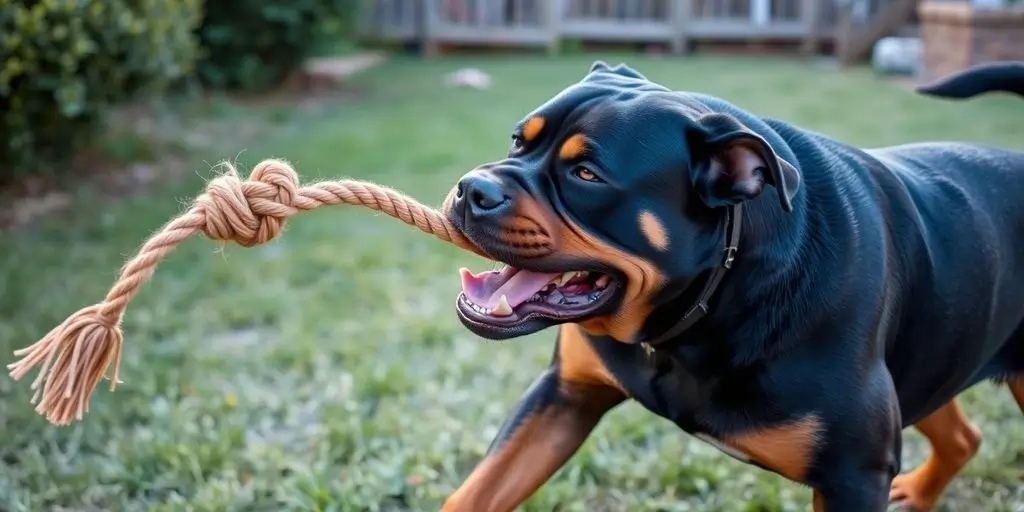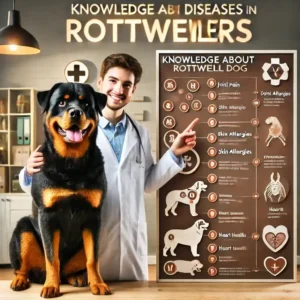Rottweilers are known for their devotion, quality, and defensive nature, making them one of the foremost popular guard mutts.
In any case, like every puppy breed, inappropriate preparation, socialization, or treatment can lead to perilous behavior. Rottweilers have solid jaws and capable nibbles, which is why chomp anticipation is significant.
By understanding the breed, guaranteeing legitimate preparation, and Rottweiler bite prevention, we will altogether diminish the chances of chomps.
Understanding Rottweiler Behavior and Rottweiler bite prevention
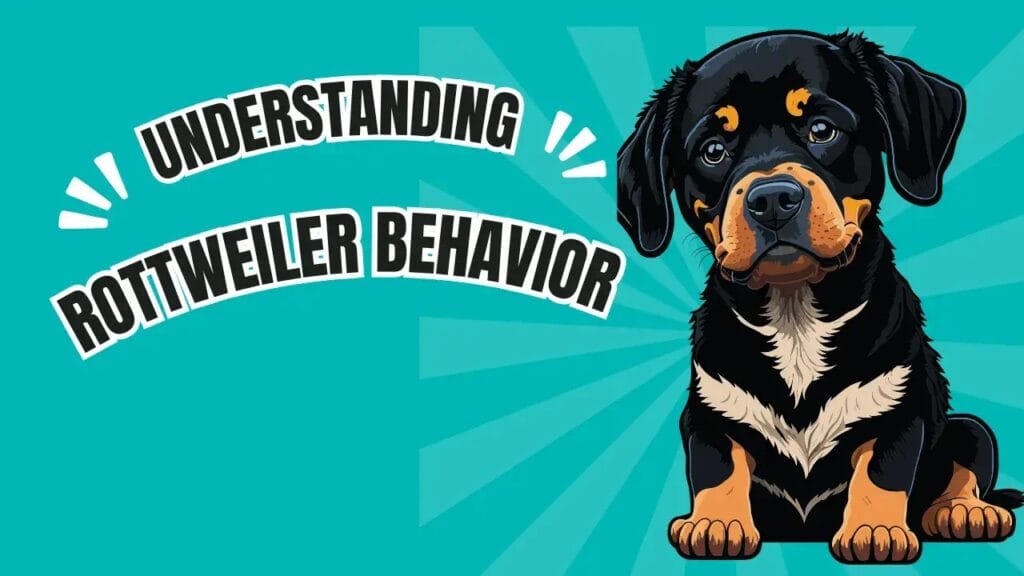
Rottweilers were initially bred as crowding mutts and are defensive. This defensive nature, whereas useful in controlled situations, can lead to forceful behavior in case the pooch feels undermined or is ineffectively prepared. Understanding their instinctual makes a difference to avoid perilous circumstances:
- Regional Instinctual: Rottweilers may end up cautious in case they feel their region is being attacked.
- Tall Prey Drive: They may respond unequivocally to small, fast-moving objects, counting children and pets.
- Guarding Inclination: If not prepared, they may attempt to watch their proprietors as well forcefully from seen dangers.
Why Do Rottweilers Bite?(How to Stop It)
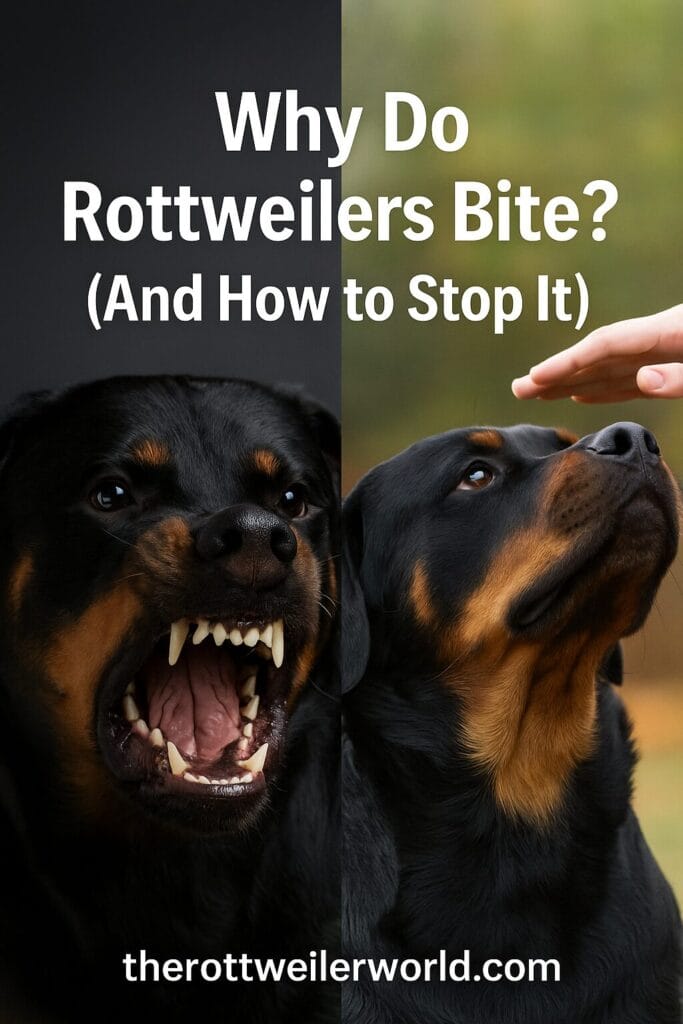
Rottweilers, like any other dog breed, may bite due to fear, stress, poor training, or feeling threatened. While they are naturally protective and loyal, a lack of socialization from a young age can make them overly cautious or aggressive in unfamiliar situations.
Sometimes, Rottweilers bite out of pain or discomfort, especially if they are injured or unwell.
It’s important to understand that biting isn’t usually about being a “bad” dog — it’s often a response to their environment or how they’ve been raised. With proper training, love, and early socialization, Rottweilers can grow up to be calm, gentle, and incredibly well-behaved companions.
7 Life-Saving Tips to Prevent a Rottweiler Bite
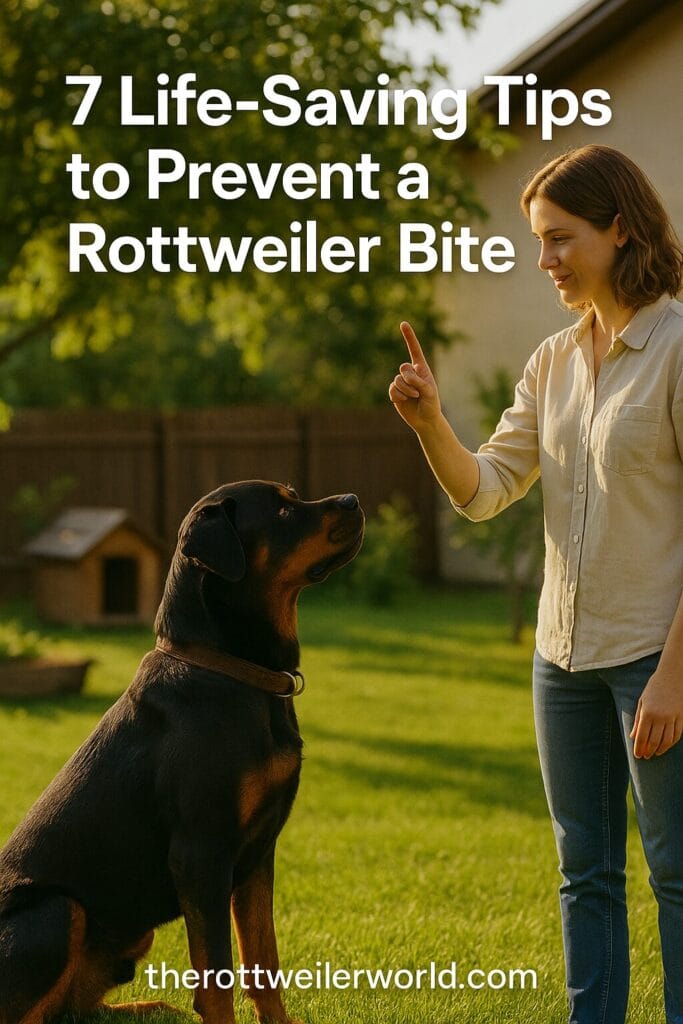
- 1. Start Early SocializationExpose your Rottweiler to people, pets, and new places from a young age.
- 2. Train with RewardsUse simple commands and reward good behavior to build trust.
- 3. Don’t Tease or ScareAvoid rough play or taking food or toys suddenly.
- 4. Watch Children CloselyNever leave kids alone with the dog, even if it’s well trained.
- 5. Learn Dog Signals know signs like growling or stiff body — they mean discomfort.
- 6. Avoid Sudden MovementsDon’t run toward or past the dog without warning.
- 7. Provide Daily Activity keep your Rottweiler busy with exercise and play to prevent frustration.
Early Socialization is Pivotal
The key to anticipating animosity in Rottweilers is early and continuous socialization. Presenting your canine to an assortment of individuals, situations, and other creatures while they’re youthful makes a difference decrease fear and uneasiness, which are common triggers for gnawing.
- Puppy Socialization Classes: Enlist your Rottweiler in a socialization course as long as they are completely immunized.
- Uncover to Unused Circumstances: Present them to active parks, other mutts, children, and indeed prosperous clamors to decrease fear reactions.
- Compensate Calm Behavior: Utilize positive fortification to empower loose and inviting behavior in unused circumstances.
Legitimate Preparation and Compliance
Preparation is fundamental to guarantee your Rottweiler gets its part inside the family and reacts well to commands. It is not as if it were set up belief but moreover empowers the pooch to stay calm beneath unpleasant circumstances.
- Fundamental Commands: Instruct your pooch commands like sit, stay, come, and leave as early as conceivable. Compliance preparation makes a difference by keeping your canine under control.
- Chain Preparation: Guarantee that your puppy is comfortable strolling on a chain. Appropriate chain preparation decreases receptive behaviors toward other individuals or creatures.
- No Forceful Play: Dodge-playing diversions like tug-of-war that can energize forceful behavior.
Never Energize Hostility
Few individuals erroneously empower animosity in Rottweilers because they need a protective puppy. Whereas it’s genuine that Rottweilers are defensive, empowering forceful behavior can reverse discharge.
- Maintain a strategic distance from Negative Preparation Strategies: Never utilize physical discipline or terrorization to prepare your puppy. This could increase hostility and lead to nibble occurrences.
- Advanced Calmness: Fortify calm and tame behaviors by fulfilling them with treats, warmth, and commendation.
- Dodge Protect Canine Preparing: Unless done by a proficient person in a controlled environment, protect canine preparing can lead to erratic and perilous behaviors in open settings.
Supervision Around Outsiders and Rottweiler bite prevention
Rottweilers ought to continuously be administered to children and outsiders, indeed on the off chance that they are well-trained. Sudden developments or new behaviors from children can trigger a defensive or responsive reaction.
- Teach Children Appropriate Pooch Behavior: Children should be instructed not to drag on the dog’s tail or ears, or exasperate the pooch when it’s resting or eating.
- Keep an Eye on Body Dialect: Observe for signs of push in your pooch, such as hardened body posture, growling, or raised hide, and expel them from the circumstances in case required.
- Administer Recess: Continuously oversee play between your Rottweiler and children, and guarantee that both parties are calm and conscious.
Dodge Activating Circumstances
Certain circumstances can trigger fear, uneasiness, or protective behavior in Rottweilers. Dodging or overseeing these circumstances can offer assistance in anticipating nibbles.
- Swarmed Ranges: On the off chance that your canine isn’t utilized in expansive swarms, maintain a strategic distance from taking them to places with numerous individuals or creatures.
- Angry Circumstances: Never put your Rottweiler in circumstances where they feel cornered, debilitated, or on edge.
- Obscure Outsiders: If a stranger approaches you, present them to your puppy gradually, permitting the pooch to feel comfortable some time recently getting as well near.
Conclusion
Rottweilers are a steadfast and defensive breed, but like all mutts, they require legitimate preparation, socialization, and care to avoid forceful behavior. Proprietors play a basic part in nibbling anticipation by guaranteeing their pooches are well-trained, socialized, and uncovered for positive encounters.
With the correct direction, Rottweilers can be neighborly and well-behaved companions, diminishing the chance of chomps and advancing secure intuition with both family individuals and the open.
Frequently Asked Questions:
No, Rottweilers are not forceful. In any case, they are defensive and regional, which can in some cases be mixed up for hostility. Legitimate preparation and socialization are key to overseeing their common instinct.
Yes, chomp avoidance is conceivable with steady preparation and early socialization. Instructing your canine fundamental commands and guaranteeing they are comfortable around different individuals and situations will altogether diminish the probability of gnawing.
Preparation ought to begin as early as conceivable, in a perfect world when they are a puppy. Early socialization between 8-16 weeks could be a pivotal period for making a difference in your Rottweiler getting comfortable with modern encounters.
Common signs of anxiety or fear in Rottweilers incorporate snarling, a hardened pose, raised hide, tucked tail, or appearing teeth. If your canine shows any of these behaviors, it’s vital to evacuate them from the circumstances.
While numerous Rottweilers can be tender with children, it is continuously more secure to oversee intelligence between pooches and youthful kids. Mutts can get to be focused or overpowered, and children may unwittingly incite a response.
